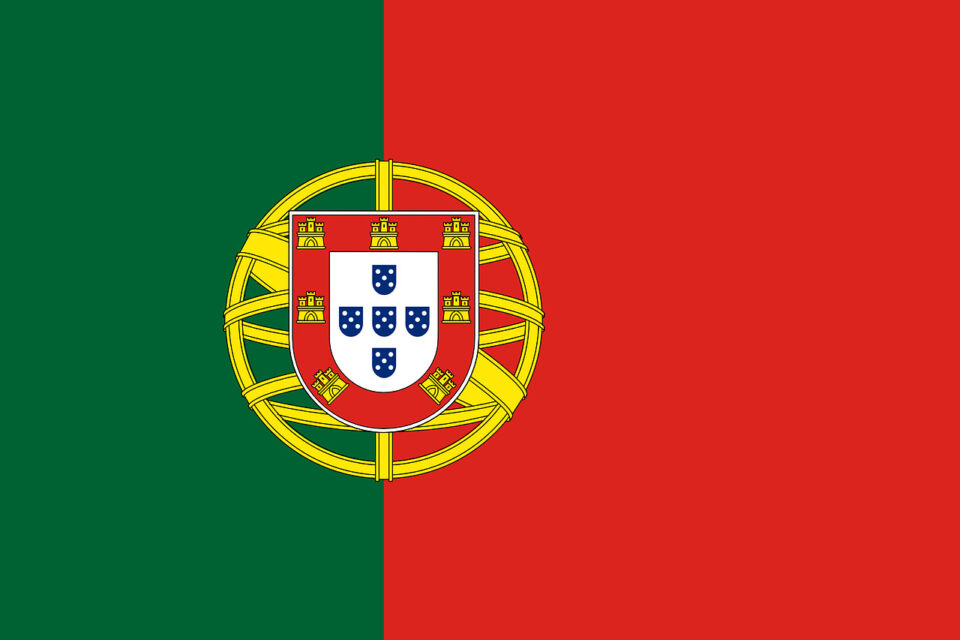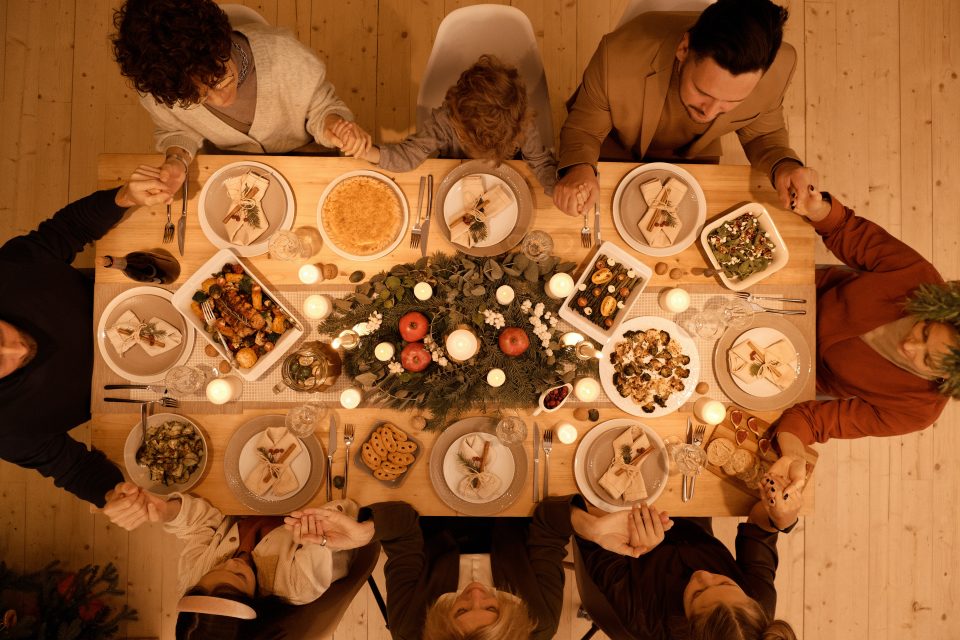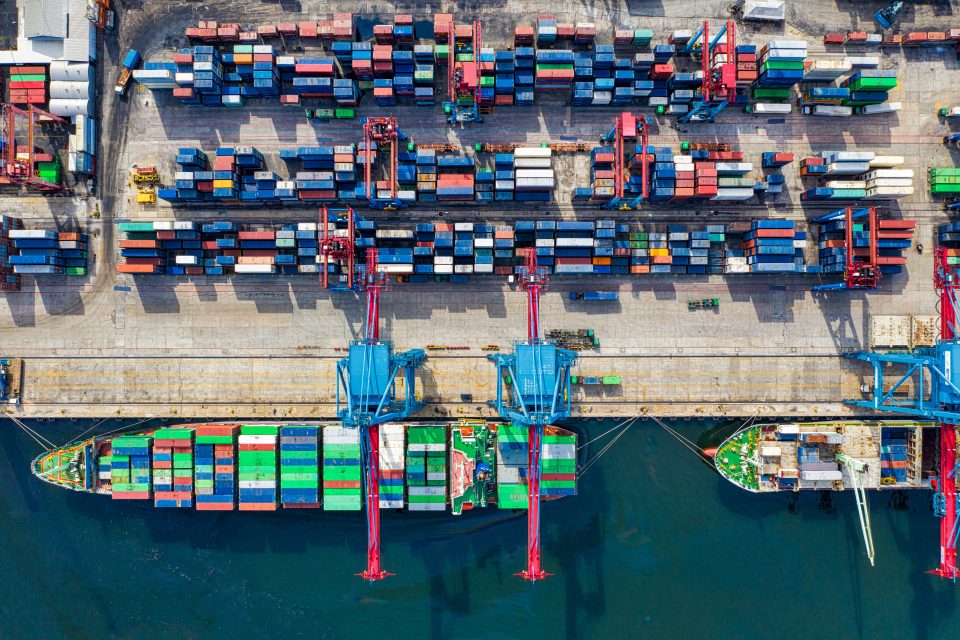
PORTUGAL
GEOGRAPHY
Portugal is an European state located in the southwest of Europe and west of the Iberian Peninsula, between 36º 57 ‘and 42º 9’ of north latitude and l os 6º 11 ‘and 9º 29’ of west longitude; it limits to the north and east with Spain, and to the south and west with the Atlantic Ocean. Its territory is completed with the Atlantic archipelagos of Madeira (Madeira Island, Puerto Santo and deserted islands), the Azores (Sao Miguel, Santa Maria, Third, Sao Jorge, Peak, Funny, Faial, Corvo and flowers), and with the Asian enclave of Macau. The original and official name of the country is the Portuguese Republic. Its capital is Lisbon.
PHYSICAL GEOGRAPHY
Extension:
– Land area: 91,951 km2
– Water surface: 440 km2 (including the Azores and Madeira Islands)
Borders;
– Total land border: 1214 Km.
– Border country: Spain (1214 Km.).
Limits:
– To the north and east with Spain.
– To the south and west with the Atlantic Ocean.
Coasts:
Iberian Peninsula.
Seas: Atlantic ocean, sea of straw.

HISTORY
The Portuguese monarchy began in the twelfth century with King Alfonso I, of the house of Burgundy, wing that the king of Leon and Castile had ceded the lands of the south of the Miño. From then on, the expansion began to the south, which allowed to extend the domains of the new kingdom. In the fourteenth century, a dynastic change took place as a result of the open succession crisis after the death of Ferdinand I of Burgundy (1383), which triggered the war between the Portuguese and the Castilians, which sought the annexation of the kingdom. The Portuguese victory allowed the arrival of the deceased son of the deceased king on the throne: the master of Avis, who took the throne under the name of Juan I. With his son Enrique the Navigator, the Portuguese maritime expeditions began, pioneers in the oceanic expansion of Europe. Sailors like Vasco deGama, but from Covilha, Bartolomeu Dias or Fernando Magallanes extended the Portuguese domain through the African coast, India and Brazil, and made possible the formation of a colonial empire only surpassed by the Spanish and centuries later by the English. The death in 1578 of King Don Sebastian opened another succession crisis, which ended with the rise to the throne of Philip II of Spain and the subsequent annexation to this country. Sovereignty was restored 60 years later with the restoration of the Portuguese monarchy, which strengthened its power with the wealth from Brazil and the establishment of close relations with the thriving British monarchy. In the eighteenth century he highlighted the figure of Marques de Pombal, the main Portuguese figure in the illustration, who carried out deep economic and political reforms. At the beginning of the 19th century, the country was invaded by Napoleonic France, which it managed to overcome with the help of its traditional ally, Great Britain. However, the country was plunged into a deep economic and social crisis, which was aggravated by the outbreak of conflicts between liberals and absolutists and the breakdown of colonial power, which culminated in the independence of Brazil in 1825. During this century the The country was left out of the incipient industrial development that was lived in northern Europe and lived in poverty and underdevelopment, which made the antitrust sentiment grow.
In 1910 the republic was established after the overthrow of King Manuel II, and in World War I the country took part in the allied side. The military coup of General Gomes deCosta in 1926 and his overthrow by General Antonio Oscar Carmona that same year were the prelude to the arrival in power in 1933 of Antonio Oliveira Salazar established an authoritarian regime on corporate bases, the so-called “State Novo”. During the Second World War the country remained neutral, although it favored the operations of the allies, and in 1968 Salazar left Marcelo Catantano in charge of health problems. The prolonged economic crisis and the bloody colonial wars against the liberation groups of the Portuguese Portuguese territories were the breeding ground for the revolutionary rupture, which occurred in 1974: the youngest army officers managed to seize power under the command of the General Spínola, in what was called “the Carnation Revolution”. Antonio Dos Santos Ramalho Eanes was appointed president of the republic, and after a new coup d’etat failed in 1975 by the ultra-left, elections were held in which the Socialist Party of Mario Soares triumphed. Another attempt by the extreme military left failed at the end of the same year, and after it, democracy was finally consolidated. The governments of different political scope followed until 1985, year in which they held elections that brought the triumph of the Social Democrats, who managed to revalidate their majority in subsequent electoral consultations. Anibal Cavaco Silva since the prime minister since then, and under his mandate there was in 1986 the incorporation of Portugal into the European Economic Community. That same year the socialist Mario Soares, who revalidated his mandate in the 1991 elections, acceded to the presidency of the republic. The economic recession of the early 1990s created great tension in Portuguese society, which began to look suspiciously at the process of establishing the European single market. The fall in industrial production and the lower influx of foreign capital joined the increase in foreign debt and unemployment (6% in 1994), formed a bleak picture that seemed to improve slightly at the beginning of 1995. The crisis caused great wear to the government of Anibal Cavaco Silva (Social Democratic Party), which in October of 1995 was widely defeated in the legislative elections by the Socialist Party, whose leader, Antonio Guterres, replaced Cavaco as Prime Minister. In January 1996 the presidential elections were held, to which the President of the Republic, the Socialist Mario Soares could not be presented due to the constitutional prohibition of remaining in the charge more than two consecutive terms. The struggle between Anibal Cavaco Silva, former Prime Ministers and the socialist Jorge Sampaio, until then mayor of Lisbon, was resolved in favor of the latter, which was another blow to the Social Democratic Party.


SOCIAL CULTURE AND RELIGION
Most Portuguese are Roman Catholics and approximately 85% of the population belong to this religion.
Portuguese culture was greatly influenced by the dominance of the Catholic Church and the traditional Christian values. This influence is still present in contemporary etiquette in Portugal. The Portuguese people are traditional and conservative. They don’t easily accept innovation and radical changes both in the community and the family. Life in Portugal revolves around the family and even in the 21st century, some traditions and ways of life remain unchanged, especially in rural areas.
In Portugal, the family is the foundation of the social structure. Individuals derive a social network and assistance from the family. For the Portuguese, family loyalty comes before other social relationships, even business. The Portuguese tend to be direct in their communication style. Usually, they will tell you the truth but in a polite manner. As one would expect, communication tends to be more on the formal side when in public and much less so in private. The Portuguese tend to speak quite fast and somewhat loudly. This show of emotion is quite common and part of the Portuguese character; rarely does it signify anger or displeasure.
The Portuguese do not use a lot of gestures. Being overly demonstrative with hand gestures or body language gives a bad impression. As in a lot of cultures, pointing with your finger is offensive.
In 1999, the population of continental and island Portugal was estimated at 9.9 million. The population increased until the 1960s, when it declined by more than 200,000 as a result of emigration to northern Europe. In the 1970s, the population rose by more than a quarter million as retornados returned from Africa after decolonization. Portugal has been receiving immigrants, primarily from former overseas territories such as the Cape Verde Islands. This immigrant population, which has settled primarily in the greater Lisbon area, is estimated to be approximately 200,000.
The main religion in Portugal is Catholicism. However, the constitution of Portugal establishes that there is religious freedom. Statistics say that 8 out of 10 Portuguese are Catholic, and about half go regularly to Mass. It is for this reason that the Catholic Church today maintains a great influence on society. In Portugal, a large number of evangelicals (or Protestants) also coexist; while Jehovah’s Witnesses, Jews, Muslims, Hindus, Orthodox, Buddhists are minority groups.
POLITICS
The current political regime in Portugal is known as a Semi-Presidential Democratic Republic with four sovereign bodies: The president of the republic, the assembly of the republic, the government and the courts. The president of the republic, also known as Head of State, exercises executive power, and his main function is the supervision of the government, being able to appoint and discard members; It can also dissolve the National Assembly and reject laws that are about to pass. The assembly of the republic is elected every four years, and currently consists of 230 deputies. Its main function is to support the government and approve or discard plans and budgets. The assembly is the main legislative institution where the main bills are discussed. The government, headed by the prime minister, usually the leader of the majority party, consists of ministers elected by the Prime Minister and the Secretaries of State. The government has the function of presenting bills before the Assembly of the Republic, to legislate and approve independently of the decree of law in the council of ministers. Finally, the courts apply justice to people through the defense of their rights and duties. The actual president of the Portuguese Republic, since 2015, is António Costa.
ECONOMY
– Agriculture and livestock: More than half of the Portuguese area is occupied by crops and pastures, with a predominance of cereals over vis and olive trees. The former are destined for the domestic market, and among them wheat stands out, which occupies a larger area than rye and barley. Vis abounds in the Duero basin, or allows obtaining a highly prized wine in international markets (Oporto), while the olive tree is preferably found in the southern region of the Algarbe. The production of both is mostly for export. Horticulture and industrial crops such as sugar beet, cotton or tobacco are important in very localized areas, but not nationally. The structure of the property and the mode of exploitation different from north to south; in the northern regions, the large estates and the alternation of crops are more widespread (with the exception of the vast extensions dedicated exclusively to the vis), while in the suer there are the large estates where olive and cereal grow. Livestock has traditionally been a fundamental activity in the Portuguese countryside, although its role in the economy is becoming smaller. The transhumance has practically disappeared, and only the cattle raising in the north of the country retains some relevance (the lanar hut is more abundant in the south).
– Fishing and forest wealth: Fishing activity was also very important in the past, and currently reaches a volume of catches that places Portugal among the first in the European Union (more than 360,000 tons per year). The most prominent species are sardines, horse mackerel and hake; as well as cod, which is fished in fishing grounds of the Newfoundland coast; As for the fishing ports, those of matosinhos, Lisbon, Aveiro, Peniche, Portimao, Setúbal and Figueira da Foz stand out. Forests occupy 35% of the surface, with greater extension dedicated to pine and corkoak, which are followed by oak and eucalyptus. Silvicultural activities have developed notably in recent decades, and allows the production of an abundant production of wood, resin and cork (Portugal supplies almost 50% of the cork consumed in the world).
– Mining: The Portuguese subsoil is poor in mineral resources. Only tungsten, tin and uranium abound, as well as building materials such as plaster, feldspar and marble and pyrites from which fertilizer and other chemicals are obtained. The production of iron and carbon is very scarce, and forces large quantities to be imported.
– Industry and energy: The productive fabric of the country is concentrated in the large coastal cities, while the interior regions are poorly industrialized. This is attributable to several factors, such as the proximity of consumption areas and seaports, through which raw materials and energy products enter. The most developed industry is textile, both wool and cotton, which is located mainly in Lisbon, Porto and Coimbras, and occupies 25% of the active population. Also important are the factories of footwear and leather, as well as those of furniture and cork, which benefit from the abundant silvicultural production, and those of transformation of agricultural and fishery products. The iron and steel industry is concentrated in areas adjacent to the ports where coal and iron are landed (Lisbon, Porto and Setúbal), as well as the refinery; On the other hand, the chemical industry is more spread throughout the country. The energy supply depends largely on oil imports, although in the north and center of the country the abundant flow of the rivers allows the existence of several hydroelectric power plants, which contribute slightly more than 45% of the energy consumed. In the south, thermal power plants predominate, to which the meager coal production is stopped.
– Tertiary sector and finance: Machinery, transport equipment and energy products are the main item of Portuguese imports, while exports are based on textile products and some industrial manufactures, to which food products must be added. The comercial exchange is carried out mainly with other members of the European Union, especially with Spain, France and Germany, and the balance is negative, although it is offset by capital remittances sent by emigrants and the captive income provided by tourism. This has increased in recent years thanks to the excellent offer of the country, in which culture, landscape and leisure are mixed. Most of the visitors are Spanish, although the number of tourists of other nationalities is increasing, choosing as their destination the surroundings of Lisbon (chascáis, estoril, sintra) or the southern region of the Algarbe, which has become one of the main touristic areas of the mediterranean Europe.
-The national currency is the shield, which is approximately 1.3 shields per peseta and 171 shields per US dollar.
– The road network has 34,000 km, of which 250 are highways, and the rail network consists of 3,6000. The old seafaring tradition and the location on one of the main international routes explains the importance of maritime transport, which is in Sines (where the largest petrochemical complex in the country), Setúbal Lisboa and leixoes are the main ports. The TAP (PORTUGUESE AIRLINES) fly abroad from the international airports of Lisbon, Porto and Faro; The latter has surpassed the transit of travelers to the port thanks to the enormous arrival of tourists to the Algarve.

IMPORT/EXPORT
In October 2020, the top exports of Portugal were Vehicles; other than railway or tramway… (€854M), Electrical machinery and equipment and parts… (€489M), Nuclear reactors, boilers, machinery and mechanical… (€382M), Plastics and articles thereof (€267M), and Mineral fuels, mineral oils and products… (€200M). In October 2020 the top imports of Portugal were Vehicles; other than railway or tramway… (€739M), Electrical machinery and equipment and parts… (€702M), Nuclear reactors, boilers, machinery and mechanical… (€613M), Mineral fuels, mineral oils and products… (€484M), and Plastics and articles thereof (€291M).
In this period, Portugal exported mostly to Spain (€1.38B), France (€763M), Germany (€648M), United Kingdom (€348M), and United States (€244M), and imported mostly from Spain (€2.14B), Germany (€945M), France (€446M), Italy (€349M), and Netherlands (€343M).
In October 2020, the decrease in Portugal’s year-by-year exports was explained primarily by an decrease in exports to Special Categories (€-87.3M or -73.3%), Canada (€-72.6M or -72.6%), and Angola (€-56.8M or -41.4%), and product exports decrease in Mineral fuels, mineral oils and products… (€-57.5M or -22.3%), Fish and crustaceans, molluscs and other… (€-28.3M or -31.5%), and Apparel and clothing accessories; not knitted… (€-23.8M or -26%). In October 2020, the decrease in Portugal’s year-by-year imports was explained primarily by an decrease in imports from France (€-174M or -28%), Spain (€-174M or -7.5%), and Angola (€-114M or -75.9%), and product imports decrease in Mineral fuels, mineral oils and products… (€-287M or -37.2%), Vehicles; other than railway or tramway… (€-194M or -20.8%), and Nuclear reactors, boilers, machinery and mechanical… (€-75.9M or -11%).

INTERNATIONAL RELATIONS
Portugal was a founding member of NATO (1949), OECD (1961), and EFTA (1960), the latter left it in 1986 to join the European Economic Community, which would become the European Union (EU) in 1993 In 1996, he was co-founder of the Community of Portuguese Language Countries (CPLP). The country has been a member state of the United Nations since 1955. Recently, the primacy of the United States and intergovernmental organizations such as NATO and the United Nations have also been of paramount importance in the assertion of Portugal abroad. Portugal has been an important beneficiary of the EU. He was one of the main beneficiaries of the EU-15 between 1995 and 2004 (only behind Spain and Greece in absolute terms, and behind Ireland and Greece on a per capita basis). Portugal is a great defender of European integration and remains in the Presidency of the European Union, for the second time during the first half of 2000, and again in the second half of 2007. Portugal uses its mandate to initiate a dialogue between the EU and Africa, and to start taking measures to make the European economy more dynamic and competitive. In 2002, the euro began to circulate as Portugal’s currency. José Socrates, Prime Minister of Portugal, chaired the rotating Presidency of the Council of the European Union for the period July-December 2007, Portugal was a founding member of NATO and is an active member of the alliance. In addition, Portugal has participated, together with Spain, in a series of Ibero-American Summits. Portugal held the presidency of the Organization for Security and Cooperation in Europe (OSCE) in 2002. The President-in-Office was Portuguese Foreign Minister António Martins da Cruz.
